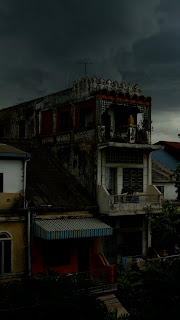
I painted this when I was 22 years old. It was early spring and the sun was warm though I still recall the tips of my fingers were chilled by the evaporating turpentine as they clasped my #12 filbert. The canvas was 5' by 4' and I completed it in about 4 hours, chasing the light and aching for the reward of a pot of hot tea. I sold it a month later at a group exhibit on Long Island. Great memories. There was still an element of the experimental in every piece, never quite sure of the outcome, always excited by the end result but perpetually frustrated by the nuances I had failed to capture. Every painting was an opportunity to improve, discover that new twist of color or stumble on how subtle pressures could perfect even my hundredth-thousand brushstroke.




















